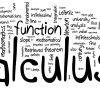 1
1For the semi - infinite rod to remain in equillibrium , the torques due to the two pieces of it separated by the support must be balanced .
Let the mass density of the rod be " Ï ( x ) " .
Let the rod be cut off at a distance " y " from the leftmost end .
Then , the support is at a distance of " y + L " from the leftmost end .
Balancing the torques due to the two pieces , we obtain , Γ = y ∫ ∞ Ï ( x ) [ x - ( y + L ) ] dx = 0
Now , we want " Γ = 0 " identically for any " y " , so , " Γ " must be a constant .
For that , we must have : -
dΓdy = 0
Or , L Ï ( y ) = y ∫ ∞ Ï ( x ) dx
Or , L Ï ' ( y ) = Ï ( y )
Or , Ï ( y ) = C e - y / L .....................( Solving the differential equation )
I think this is the required answer .
Not a olympiad level problem though , according to me of course , so no hard feelings : ) .
 71
71Balancing the torques due to the two pieces
Yeh wala step thoda elaborate karna na, plz!
 1
1ricky
pl tell how u got dis step
L Ï ( y ) = y ∫ ∞ Ï ( x ) dx ...
 1
1I just differentiated " Γ " with respect to " y " . Since the limits of the integration also involve " y " , hence you have to use " Newton - Liebniz " rule here .
As for the doubt of Vivek : - Just write down the torques due to the two masses considering that the rod lies on the positive " x - axis " or something . Then you ' ll see it yourself .
I am too lazy right now Vivek , so if you can't " see " , then please drop a note in my chatbox : ) Sorry :( :D
 1
1in dat 3rd last step, it'l be p[y-l] on lhs, not pl, pls check
 1
1Nopes , its absolutely okay . Can you post your working step by step ?
 1
1d/dy of y ∫ ∞p[x]*[x-l]dx = p [y]*[y-l]...
rhs --same as above-- y ∫ ∞ Ï ( x ) dx
 1
1i split it into 2 integals--- x-l vala alag, y vala alag...
then applied d formulae of newton-leibn..
 1
1in d integand independent of y---simply substitute y for x,,thats what i did,,
 1
1y ∫ ∞ Ï ( x ) [ x - ( y + L ) ] dx = y ∫ ∞ Ï ( x ) [ x - y ] dx + y ∫ ∞ Ï ( x ) L dx
Now differentiating ,
Ï ( y ) ( y - y ) + y ∫ ∞ Ï ( x ) dx = L Ï ( y )
So , is it clear now ?
 1
1seems gud enough,,
but whats wrong in dis?
y ∫ ∞ Ï ( x ) [ x - ( y + L ) ] dx= y ∫ ∞ Ï ( x ) [ x - L ] dx - y ∫ ∞ Ï ( x )[ y ] dx
Now differentiating ,
Ï ( y ) ( y - L ) = y ∫ ∞ Ï ( x ) dx
 1
1ddy ( y ∫ ∞ Ï ( x ) y dx ) = Ï ( y ) y + y ∫ ∞ Ï ( x ) dx
Not what you have written : )
 1
1oh,,,i was applying constant limits vala formulla,,,,
thanks a TON for d help...:]